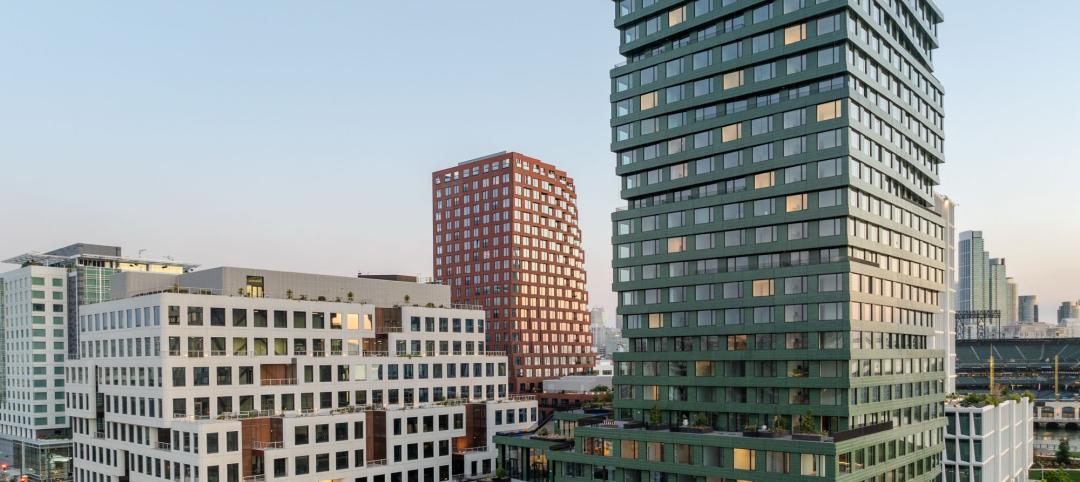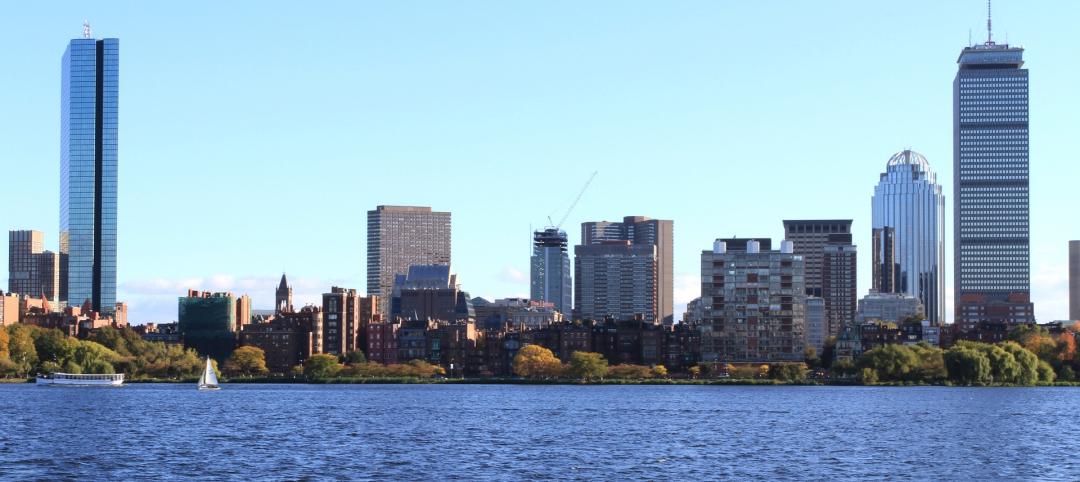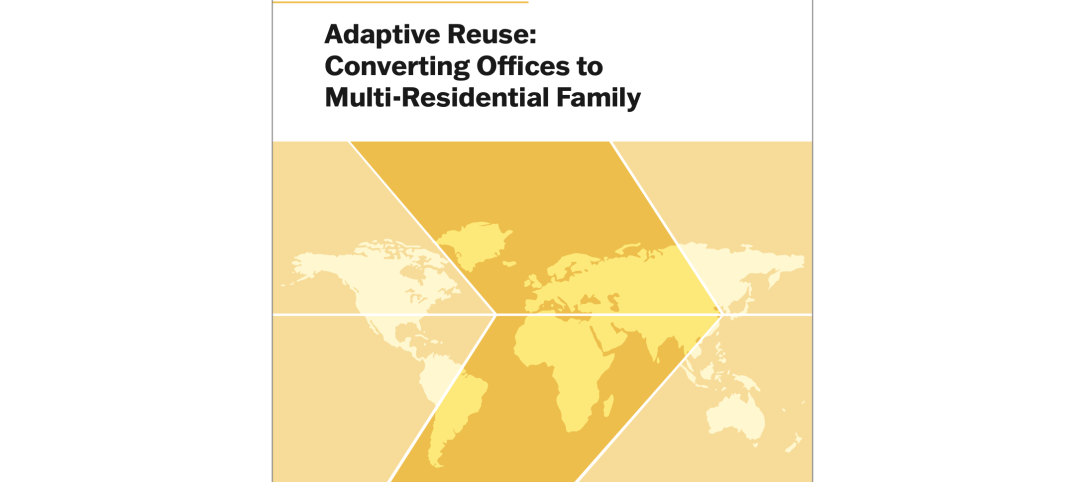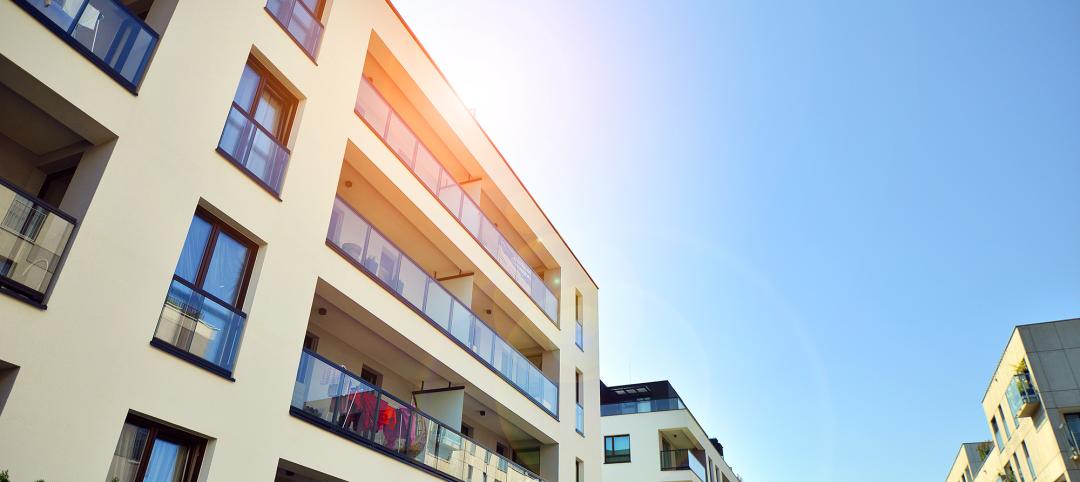By this time next year, Katerra—a technology startup whose end-to-end business model combines prefabrication, architectural, and construction services primarily for multifamily housing—expects to have six manufacturing plants up and running, including its first mass timber factory, a 250,000-sf building under construction on 29 acres in Spokane, Wash.
That plant, when fully operational in early 2019, will be capable of producing about 4.6 million cubic feet of cross-laminated timber annually. The plant’s size is comparable to CLT factories operating in Europe. “We’re going all in on CLT,” says Trevor Schick, who oversees Katerra’s supply chain, lighting, renovation, and commercial rollout activities.
Katerra’s initial success—it booked $1.3 billion in business last year—and its aggressive growth posture have attracted several high-profile investors, most prominently Japan’s SoftBank, from whose $100 billion Vision Fund Katerra recently raised $865 million in its latest round of financing.
SoftBank is steadily investing in tech-oriented companies that are impacting the built environment. In December, it paid $9.3 billion to acquire a 15% stake in Uber Technologies. It owns the robotics manufacturer and research firm Boston Dynamics. Last summer, SoftBank invested $200 million in the indoor farming enterprise Plenty. And it holds a $4.4 billion stake in WeWork, the cosharing office developer.
TechCrunch reported that the venture-capital world fully expects SoftBank to raise another $100 billion for future investments soon.
In-house design team and consortium
The Menlo Park, Calif.-based Katerra is already among the country’s largest GCs. The housing markets it serves include multifamily, senior and student living, and master-planned developments. Katerra’s largest customer is The Wolff Company, a real estate private equity firm that focuses on the multifamily sector, and whose executive chairman Fritz Wolff was one of Katerra’s Co-founders.
“Having a lead customer is important, given the investment we’re making in factories, IT, and so forth,” says Schick.
Katerra currently produces wall panels, roof and floor trusses, cabinets, and countertops from its factory in Phoenix, which began production in early 2017. That facility features Katerra’s Design Showroom, where clients can view a full suite of products and interior design solutions, including fully finished apartment units made entirely from Katerra-supplied products.
 Union Bay South in Carson, Calif., designed by Architects Orange, will offer 357 residential units, with four- and five-story wood framed buildings wrapping two separate concrete parking structures. The building, currently under construction, will include 30,000 sf of retail. Katerra is providing construction, management, and materials. Image: Katerra
Union Bay South in Carson, Calif., designed by Architects Orange, will offer 357 residential units, with four- and five-story wood framed buildings wrapping two separate concrete parking structures. The building, currently under construction, will include 30,000 sf of retail. Katerra is providing construction, management, and materials. Image: Katerra
Last June, Katerra acquired Nystrom Olson, a boutique architectural studio in Spokane. And six months later, it announced the forming of a design consortium whose members include Michael Green of Michael Green Architecture, a leader in mass timber architectural design; Andrea Leers of Boston-based Leers Weinzapfel Associates, which has also designed buildings using mass timber; Ted Flato of Lake|Flato in Texas; and Joe Greco of Lord Aeck Sargent, a full-service architecture and design firm with six offices.
With Green, Katerra is working on the design and construction of the new Hospitality Center in association with the Community Cancer Fund, Ronald McDonald House and Kootenai Health (Walden House) in Coeur d’Alene, Idaho.
Schick tells BD+C that, aside from the CLT plant in Washington, the other facilities Katerra moves into or builds this year will be conventional wood panel and truss factories. Its next mass timber plant is likely to be located in the Southeastern U.S., although Schick didn’t say when construction for that might start.
Leaning toward mass production
Katerra started as a materials supplier, with sourcing offices in Asia and Mexico. But the company soon realized that it needed a “larger scale” to get its cost model right, says Schick. That meant taking more control over the design, production, construction, and logistics of what it sold.
Technology has been the key to that transformation. Before joining Katerra, Schick spent over 15 years in the electronics industry, most recently as senior vice president at Hewlett-Packard involved in global supply chain and quality. One of Katerra’s Co-founders, Michael Marks, had been CEO of an electronics company now called Flex. A third Co-founder, Jim Davidson, founded Silver Lake, a technology investment firm.
Marks is convinced that building construction would benefit greatly from mass production techniques that are common in electronics and automotive manufacturing. Consequently, Katerra uses a kit-of-parts design system that it combines with prefabricated components production and onsite assembly.
The company’s technology platforms include SAP HANA, a market analytics platform that mines data from real estate and construction; a mobile app that connects its workforce in the field; and industrial IoT tools that optimize jobsite activity and track inventory.
 Katerra is building its first mass timber factory, a 250,000-sf building in Spokane, Wash., which will be able to produce 4.6 million cubic feet of product annually. Image: Katerra
Katerra is building its first mass timber factory, a 250,000-sf building in Spokane, Wash., which will be able to produce 4.6 million cubic feet of product annually. Image: Katerra
Schick says the company currently has 12 multifamily projects under way, ranging from 200 to 400 housing units per project. Sometime this year, he says the company plans to enter the hotel construction sector. Katerra also wants to build schools eventually.
As for projects using mass timber, Schick believes that demand among developers, contractors, and cities can only go up. He notes that the International Code Council has a vote scheduled for April to amend the 2021 International Building Code to allow for the use of CLT for buildings up to 18 stories. (Currently, CLT is limited in the U.S. to buildings no higher than six stories.)
In Washington State, ESB Bill 5450, which has passed both chambers of the legislature and is on the governor’s desk to sign, creates a section in the state statute defining qualifying mass timber products. It also directs the State Building Code Council to adopt rules for the use of mass timber in residential and commercial building, consistent with application national and international standards.
Katerra is already doing fire, earthquake, and wind sheer testing of CLT panels that it can make on its 60-foot-long by 12-foot-wide press.
Related Stories
Mixed-Use | Oct 7, 2024
New mixed-use tower by Studio Gang completes first phase of San Francisco waterfront redevelopment
Construction was recently completed on Verde, a new mixed-use tower along the San Francisco waterfront, marking the end of the first phase of the Mission Rock development. Verde is the fourth and final building of phase one of the 28-acre project that will be constructed in several phases guided by design principles developed by a design cohort led by Studio Gang.
MFPRO+ News | Sep 24, 2024
Major Massachusetts housing law aims to build or save 65,000 multifamily and single-family homes
Massachusetts Gov. Maura Healey recently signed far-reaching legislation to boost housing production and address the high cost of housing in the Bay State. The Affordable Homes Act aims to build or save 65,000 homes through $5.1 billion in spending and 49 policy initiatives.
MFPRO+ News | Sep 23, 2024
Minnesota bans cannabis smoking and vaping in multifamily housing units
Minnesota recently enacted a first-in-the-nation statewide ban on smoking and vaping cannabis in multifamily properties including in individual living units. The law has an exemption for those using marijuana for medical purposes.
The Changing Built Environment | Sep 23, 2024
Half-century real estate data shows top cities for multifamily housing, self-storage, and more
Research platform StorageCafe has conducted an analysis of U.S. real estate activity from 1980 to 2023, focusing on six major sectors: single-family, multifamily, industrial, office, retail, and self-storage.
Mixed-Use | Sep 19, 2024
A Toronto development will transform a 32-acre shopping center site into a mixed-use urban neighborhood
Toronto developers Mattamy Homes and QuadReal Property Group have launched The Clove, the first phase in the Cloverdale, a $6 billion multi-tower development. The project will transform Cloverdale Mall, a 32-acre shopping center in Toronto, into a mixed-use urban neighborhood.
Codes and Standards | Sep 17, 2024
New California building code encourages, but does not mandate heat pumps
New California homes are more likely to have all-electric appliances starting in 2026 after the state’s energy regulators approved new state building standards. The new building code will encourage installation of heat pumps without actually banning gas heating.
Adaptive Reuse | Sep 12, 2024
White paper on office-to-residential conversions released by IAPMO
IAPMO has published a new white paper titled “Adaptive Reuse: Converting Offices to Multi-Residential Family,” a comprehensive analysis of addressing housing shortages through the conversion of office spaces into residential units.
MFPRO+ Research | Sep 11, 2024
Multifamily rents fall for first time in 6 months
Ending its six-month streak of growth, the average advertised multifamily rent fell by $1 in August 2024 to $1,741.
Legislation | Sep 9, 2024
Efforts to encourage more housing projects on California coast stall
A movement to encourage more housing projects along the California coast has stalled out in the California legislature. Earlier this year, lawmakers, with the backing of some housing activists, introduced a series of bills aimed at making it easier to build apartments and accessory dwelling units along California’s highly regulated coast.
MFPRO+ New Projects | Sep 5, 2024
Chicago's Coppia luxury multifamily high-rise features geometric figures on the façade
Coppia, a new high-rise luxury multifamily property in Chicago, features a distinctive façade with geometric features and resort-style amenities. The 19-story, 315,000-sf building has more than 24,000 sf of amenity space designed to extend resident’s living spaces. These areas offer places to work, socialize, exercise, and unwind.

















